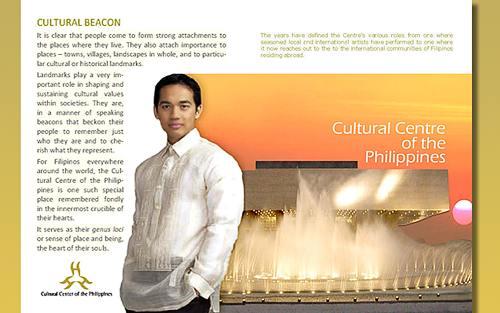
LEST THEY FORGET
Over the recorded and unrecorded centuries, multitudes of people have mi grated to and settled in countries across the world just as they continue to do so today.
Many of them have contributed to the development of their adopted homes. They in turn have positively impacted, even modified the social fabric and landscape of these various countries.
However, the memory and thus the story of their contributions are not per ceived, articulated, appreciated or preserved for the posterity of their children and their children’s children. Are they just imagined communities or silent bystanders dwelling anonymously in all these lands? If, as a people, they leave nothing salient behind, will they be forgotten?
Isn’t it time to sit down pensively and ask ourselves the meaning behind these questions?
______________________________________________________________
SNEAK PREVIEW: FOOTPRINTS IN THE SAND – A SYNOPSIS
NAVIGATION TIPS: The full content of this magazine preview issue is stored on the servers of Issuu.com. When clicking the image inside the boxed panel above and depending on your browser, you may be redirected to a separate viewing page which expands on your browser. Navigation buttons are found on this new page which makes it easy for you to expand or minimize all pages with ease, including closing the viewing page when you’re done which will return you to this website. The other images you also find on this webpage are snapshots of actual pages that will be featured on the full version when it is released online in November 2013.

NOT IN THE MAINSTREAM
No matter what may be said to the contrary, New Zealand is essentially a country of migrants from many diverse lands, backgrounds and cultures. It is a young country making its way in the world as are its many diverse communities of migrants.
Among these are the Filipino-Kiwis whose whole cultural experience as a growing ethnic minority is rarely included in main stream historical accounts of New Zealand. This is because they have only come into the country in numbers at the start of the 1990s.
Their stories and the significance of their contributions have yet to be assessed or appreciated by the larger community.

BUT NUMBERS ARE GROWING
The Filipino-Kiwi Community today is now the third largest migrant community in New Zealand. Amazingly, they have doubled over in size since 2006 to an estimated 35,000 individuals with the Wellington region hosting about a third of them.
To this day, many of them keep wondering privately what it is that they have become. Have they morphed into a displaced and transported people outside their homeland as an imagined and amorphous knowable community consisting of just dreams, fears, loves, and longings? Are they a vague, ill-defined people without a clearly defined shape or form?
Filipinos are not transmigrates nor transnational despite some over elaborate claims of academic pundits and the exoticizing mantra of some patronising media not only in the Philippines, but also in countries where Filipino com munities reside. That said, Filipinos can only find their true home when there is a radical systemic change within their own communities. To accomplish this, they all need to begin ‘cultivating their own garden’ as one.

FINDING THEIR GENUS LOCI
It is clear that people come to form strong attachments to the places where they live. They also attach importance to places – towns, villages, landscapes in whole, and to particular cultural or historical landmarks.
Landmarks play a very important role in shaping and sustaining cultural values within societies. They are, in a manner of speaking, beacons that beckon their people to remember just who they are and to cherish what they represent.
For Filipinos everywhere around the world, the Cultural Centre of the Philip pines is one such special place remembered fondly in the innermost crucible of their hearts. It serves as their genus loci or sense of place and being, the heart of their souls. But can it be replicated elsewhere?

INSPIRATION FROM HAWAI’I
Sprawling over two acres by the old Oahu Sugar Mill on suburban Waipahu, the three-story Filipino Community Centre (FilCom) covers an impressive 50,000 square feet.
It is the biggest Filipino-built culturally-inspired community centre outside of the Philippines and is architecturally designed to reflect the Filipino’s Spanish-inspired cultural lineage along with a few others it has assimilated over the centuries.
Although it is in every aspect Filipino, it is also multi-cultural in that the renters, guests and its four caterers belong to different ethnic origins. It is a building built on Filipino pride and bayanihan spirit and yet still retains enough spirit of aloha.
THE THREE CRUCIAL FORCES
In a manner of speaking, the Filipino-Hawai’ians managed to build something essentially from nothing!
Their success is about 3 crucial forces whose combined momentum propelled community activism to fulfill what many considered to be just a pipe dream by many armchair critics who really had nothing much to contribute in the first place.
First, many selfless hands pulled together after a small band of visionaries were joined in by a few and then later by dozens of volunteers from different age groups and all walks of life who worked tirelessly to secure pledges, grants and loans, and also donating their professional services.
Second, the community employed a strong framework of institutionalisation which required adopting best practices of professionalism rather than rely on individual, personal or partisan agendas and considerations.
Third, it challenged the community to edify the resilient spirit which dwells inside every Filipino not only for their significant contributions to Hawai’i and to express it as a symbol of a ‘can-do’ people through their art, culture and traditions. Together, these forces fuelled a passion to reach the summit of their aspirations. And in accomplishing it, a united community emerged.

THE FULL STORY VERSION
By the end of November this year, the full version “Footprints in the Sand-The Story” will be published. It will contain over 70 fully-illustrated pages in online e-Magazine format that allows it to spread virally across the World Wide Web.
If you or others who you know are interested in participating as page ad sponsors, now is a good time to sign as such. It is open to individuals, business and organisations who may wish to gain some exposure to an audience reaching over a hundred thousand viewers not mentioning the many more who will come across it over the Internet in these days of online social networking.
______________________________________________________________
FOOTPRINTS IN THE SAND – NEW ZEALAND PHILIPPINES BUSINESS COUNCIL
A HEADS-UP: What you are viewing above are the actual pages found on the full version of the e-Magazine that contains the section featuring New Zealand Philippines Business Council. Feel free to browse through each of the pages in the same manner as explained to you above in order to acquire a better idea of the upcoming release of ‘Footprints in the Sand-The Story’. Should you take an interest to participate as an ad sponsor for this eMagazine publication, this matter is explained more in detail below.

Sponsored ad spaces on this e-Magazine publication are at the moment limited to only two sizes:
(1) Standard size (see above image panel as an example) of 48 slots at a cost of NZ$ 150/slot. Sponsors will need to provide their own digital images (jpeg or .png format). The dimensions for a standard size ad are: width=438-pixels and height=310-pixels, or its equivalent of approximately 3.71-cm by 2.62-cm at a resolution of 300-pixels/inch.
(2) Half Page size limited to only 12 slots at a cost of NZ$ 300/slot. Image dimensions for this size are: width=657-pixels and height=465-pixels, or its equivalent of approximately 5.56-cm by 2.93-cm at a resolution of 500-pixels/inch.
Reservations are now open for these limited slots on a first-come first-served basis and full payment is required in advance since a portion of the proceeds will be donated to two charities.
These are, namely: the Bulwagan Foundation Trust – which is currently con ducting community awareness and engagement meetings in Wellington to raise the profile and funding for a cultural community centre building project and the Street Children and Orphans (SCOT) Trust Foundation in Auckland – which has localized its successful overseas hands-up Slingshot Model for Empowerment for Kiwi children through breakfast club feeding programmes and also English literacy programmes for Asian migrant’s children.
Don’t miss out on this opportunity. For reservations, please email Karl.
______________________________________________________________

 During the Spanish
During the Spanish































I could not resist commenting. Well written!
I appreciate the details on your website.
Appreciate it.